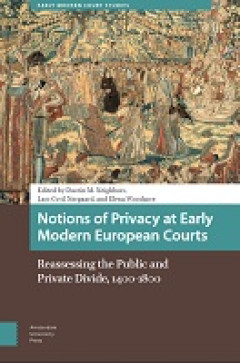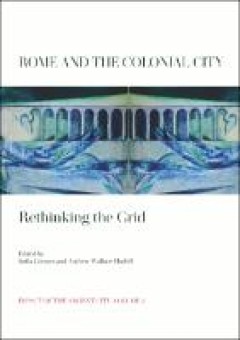Ditapis dengan
E-book The Bentham Brothers and Russia : The Imperial Russian Constitution an…
In the eighteenth century Russia was a newcomer to the familiar concert of European nations, an exciting or worrying outsider among the established powers. In 1703 Tsar Peter Alekseevich, Peter I, the Great, founded a new city, St Petersburg, at the eastern end of the Baltic Sea. Thereby, in the famous words of Russia’s national poet Aleksandr Pushkin, he �…
- Edisi
- -
- ISBN/ISSN
- -
- Deskripsi Fisik
- 322 hlm
- Judul Seri
- -
- No. Panggil
- 940 BAR t
E-book The Earliest Europeans : A Year in the Life: Survival Strategies in th…
Humans, represented by members of genus Homo, have been living in Europe for around 1.5 million years. But who were they? How did they survive? In short, what kinds of ‘humans’ were these? These are the fundamental questions addressed, though the lens of the changing seasons, in the pages that follow. But why ask these questions and why should we be interested…
- Edisi
- -
- ISBN/ISSN
- 9781785707643
- Deskripsi Fisik
- 385 hlm
- Judul Seri
- -
- No. Panggil
- 940 HOS t

E-book Notions of Privacy at Early Modern European Courts: Reassessing the Pu…
Grand, extravagant, magnificent, scandalous, corrupt, political, personal, fractious; these are terms often associated with the medieval and early modern courts. Moreover, the court constituted a forceful nexus in the social world, which was central to the legitimacy and authority of rulership. As such, courts shaped European politics and culture: architecture, art, fashion, patronage, and cult…
- Edisi
- -
- ISBN/ISSN
- 9789463720076
- Deskripsi Fisik
- 306 halaman
- Judul Seri
- -
- No. Panggil
- 940.2 NEI n

E-Book Rome and the Colonial City: Rethinking The Grid
According to one narrative, that received almost canonical status a century ago with Francis Haverfield, the orthogonal grid was the most important development of ancient town planning, embodying values of civilization in contrast to barbarism, diffused in particular by hundreds of Roman colonial foundations, and its main legacy to subsequent urban development was the model of the grid city, sp…
- Edisi
- -
- ISBN/ISSN
- 9781789257823
- Deskripsi Fisik
- 433 halaman
- Judul Seri
- -
- No. Panggil
- 940 GRE r
E-book Four Histories about Early Dutch Football, 1910-1920
I remember being interested in Dutch football from a young age. The first football match I can remember watching was the Italia 1990 World Cup match between England and the Netherlands – although saying I remember ‘watching’ it is a little inaccurate. To be honest, until I looked up the score, while writing this, I could not remember who had won (actua…
- Edisi
- -
- ISBN/ISSN
- 9781910634790
- Deskripsi Fisik
- 240 hlm
- Judul Seri
- -
- No. Panggil
- 940.5 PEI f
 Karya Umum
Karya Umum  Filsafat
Filsafat  Agama
Agama  Ilmu-ilmu Sosial
Ilmu-ilmu Sosial  Bahasa
Bahasa  Ilmu-ilmu Murni
Ilmu-ilmu Murni  Ilmu-ilmu Terapan
Ilmu-ilmu Terapan  Kesenian, Hiburan, dan Olahraga
Kesenian, Hiburan, dan Olahraga  Kesusastraan
Kesusastraan  Geografi dan Sejarah
Geografi dan Sejarah